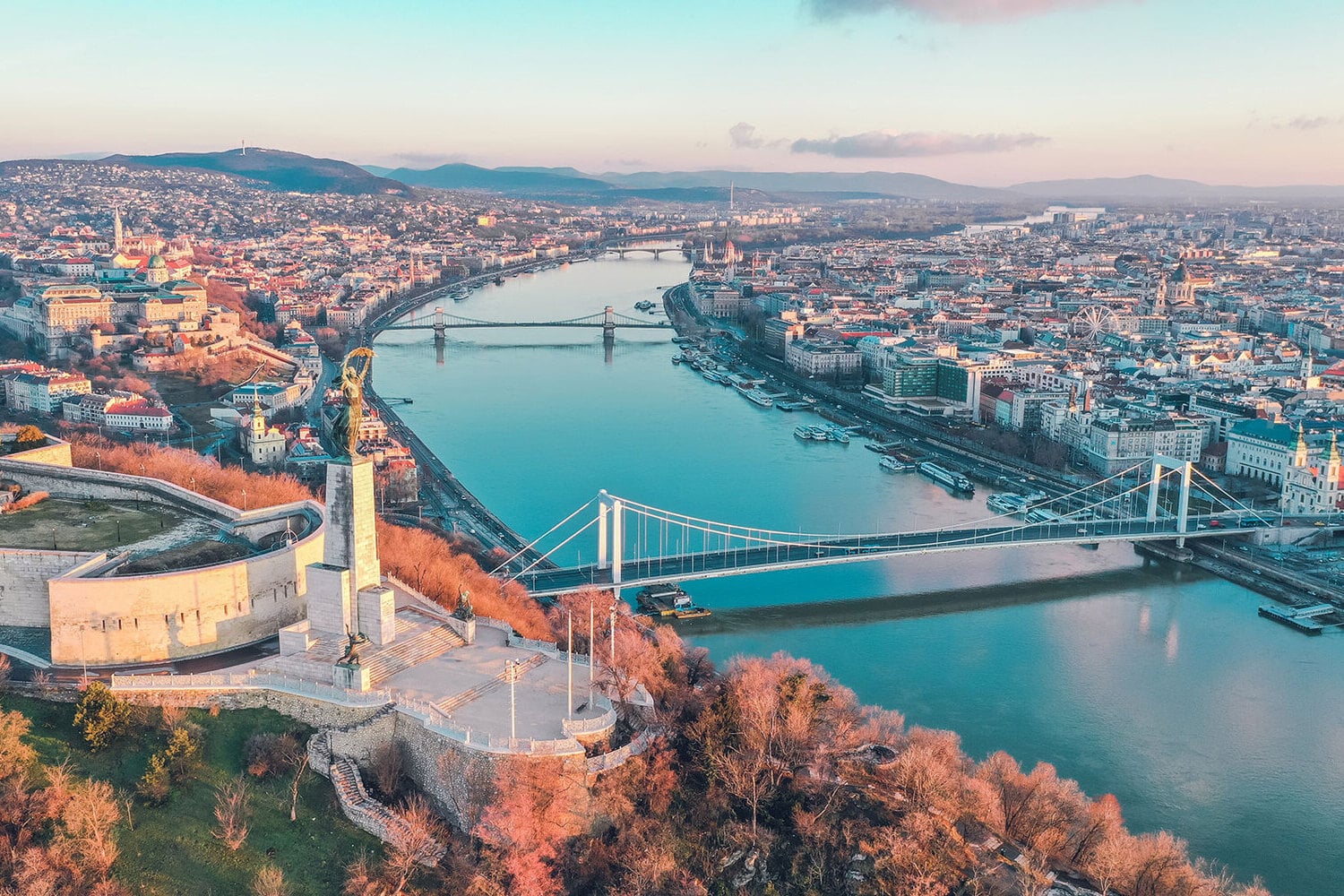Budapest is one of the most beautiful and unique cities in Europe, attracting millions of tourists every year. The city is located on the banks of the majestic Danube, where ancient history, rich culture, and the vibrant rhythm of a modern metropolis meet. Walking through the streets of Budapest, you can feel the spirit of discovery, as the city is filled with exceptional architectural monuments, historic baths, cozy cafes, and breathtaking views. Many events, legends, and interesting details are interwoven in Budapest’s history, making it truly one of a kind. Below you will find fascinating and interesting facts about Budapest that you may not have known.
- Budapest was formed by the unification of three separate towns – Buda, Pest, and Óbuda – in 1873. This union marked the beginning of the modern Hungarian capital, which quickly became a major European center.
- The city stretches along both banks of the Danube, giving it a unique charm. On the right side is the hilly Buda, and on the left lies flat Pest, connected by numerous bridges, the most famous of which is the Chain Bridge.
- Budapest is known as the “city of thermal waters” since it is home to over 120 hot springs. The city is famous for its thermal baths, with Széchenyi, Gellért, and Rudas being the most renowned.
- The city is home to the second largest parliament building in Europe – the Hungarian Parliament Building on the banks of the Danube. Its architectural style combines elements of Gothic, Renaissance, and Baroque, and the interior impresses with its luxury and splendor.
- Budapest has one of the oldest underground metro lines on the European continent. The city’s metro was opened as early as 1896 and is still in operation today, symbolizing progress and development.
- The city is famous for its picturesque hills, the most notable being Gellért Hill, which offers breathtaking views of the Danube and the entire city. The hill is also home to the impressive Citadel and the Liberty Statue.
- Budapest is celebrated for its bridges, especially the Chain, Margaret, and Elisabeth bridges. The nighttime illumination of these constructions creates a unique and romantic atmosphere in the city.
- The city is full of parks and islands. Margaret Island is a favorite relaxation spot for both locals and visitors, with its fountains, gardens, pools, and even the ruins of medieval monasteries.
- Budapest is home to one of the shortest tram lines in the world – route number 2. This tram runs along the embankment, offering picturesque views of the Danube and the city’s historic quarters.
- The architecture of Budapest is an eclectic mix, ranging from medieval Gothic and Baroque to Art Nouveau and Art Deco. Many buildings were restored after World War II and today look even more magnificent.
- Among the city’s landmarks is the Fisherman’s Bastion, built at the end of the 19th century. Its observation terraces provide some of the most beautiful panoramic views in Europe.
- Budapest is famous for its coffee culture, and its old cafes have inspired poets, artists, and politicians. Some of these coffeehouses have existed for over a century and boast a truly unique atmosphere.
- The Hungarian capital is also a city of festivals: music, theater, food, and sports events are held here regularly. The largest of these is the world-famous Sziget Festival, which attracts tens of thousands of guests from around the globe.
- One of Budapest’s most iconic landmarks is Buda Castle – the former residence of Hungarian kings. Today, this magnificent complex houses museums, libraries, and art galleries.
- The city has its own legends and mystical stories, including those about the underground labyrinths of Buda, which served as shelters in the Middle Ages and were later used during wars.
- Budapest is renowned for its rich gastronomy. National dishes like goulash, fish paprikash, and a variety of desserts are an essential part of local culture.
- The city boasts one of the most famous opera houses in Europe – the Hungarian State Opera, built in Neo-Renaissance style. Many world stars have performed here, and the building itself is an architectural jewel.
- Budapest has one of the most beautiful zoos in Europe, founded in the 19th century. It combines historic architecture and modern exhibits, and is home to thousands of animals.
- The city is also home to the Great Synagogue on Dohány Street, the largest in Europe and one of the largest in the world. Its architecture and history attract visitors of many faiths and nationalities.
- The Hungarian capital regularly ranks among the best cities for travel and living in Europe, thanks to its high quality of life, well-developed infrastructure, and vibrant cultural scene.
These amazing and interesting facts about Budapest let you experience the unique atmosphere of a city that impresses with its beauty, diversity, and special energy. Budapest blends a thousand-year history, legends, and a modern rhythm, inspiring new discoveries and unforgettable journeys. Fascinating facts about this city help you understand its uniqueness, and you may not have known how much Budapest has to offer every guest.





